-
 Bitcoin
Bitcoin $107,443.3008
-1.17% -
 Ethereum
Ethereum $2,494.2503
-0.63% -
 Tether USDt
Tether USDt $1.0003
0.00% -
 XRP
XRP $2.2496
2.23% -
 BNB
BNB $658.7569
0.63% -
 Solana
Solana $154.9826
1.94% -
 USDC
USDC $1.0000
0.01% -
 TRON
TRON $0.2799
1.07% -
 Dogecoin
Dogecoin $0.1659
-1.78% -
 Cardano
Cardano $0.5745
0.25% -
 Hyperliquid
Hyperliquid $39.7005
0.13% -
 Bitcoin Cash
Bitcoin Cash $519.5989
3.78% -
 Sui
Sui $2.7874
-2.40% -
 Chainlink
Chainlink $13.3762
-1.69% -
 UNUS SED LEO
UNUS SED LEO $9.0784
-0.64% -
 Avalanche
Avalanche $17.9846
-2.81% -
 Stellar
Stellar $0.2390
-0.06% -
 Toncoin
Toncoin $2.9028
0.25% -
 Shiba Inu
Shiba Inu $0.0...01147
-2.17% -
 Litecoin
Litecoin $86.6956
-1.27% -
 Hedera
Hedera $0.1508
-0.50% -
 Monero
Monero $322.6222
3.26% -
 Polkadot
Polkadot $3.4124
-2.99% -
 Dai
Dai $0.9999
0.00% -
 Bitget Token
Bitget Token $4.5434
-1.97% -
 Ethena USDe
Ethena USDe $1.0002
0.00% -
 Uniswap
Uniswap $7.1562
-2.61% -
 Aave
Aave $275.8830
-1.02% -
 Pepe
Pepe $0.0...09790
-4.04% -
 Pi
Pi $0.5018
-5.09%
How does Trust Wallet prevent private key leakage?
Trust Wallet uses local storage, encryption, secure enclaves, and biometric authentication to protect your private keys from unauthorized access and potential theft.
Apr 05, 2025 at 05:49 am
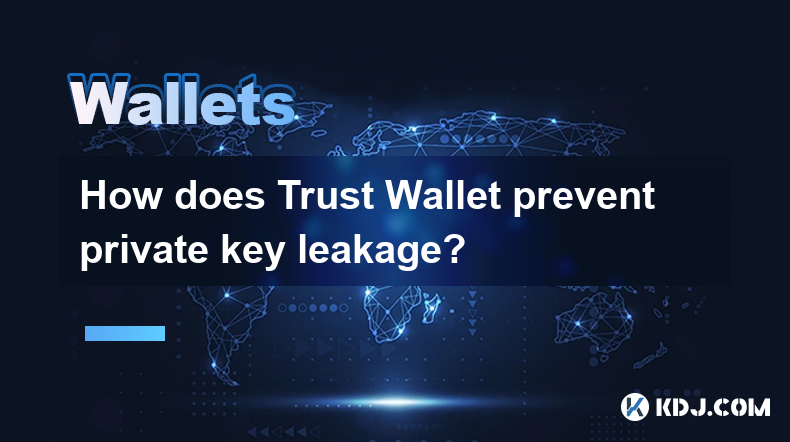
Trust Wallet, a popular mobile cryptocurrency wallet, prioritizes user security and employs several measures to prevent private key leakage. Understanding these safeguards is crucial for users to confidently manage their digital assets. This article delves into the mechanisms Trust Wallet utilizes to protect your private keys and maintain the integrity of your crypto holdings.
Trust Wallet's Multi-Layered Security Approach
Trust Wallet's security isn't reliant on a single method, but rather a robust, multi-layered approach. This strategy combines various techniques to minimize the risk of private key exposure. The core principle revolves around keeping your private keys securely stored and inaccessible to unauthorized parties, both online and offline.
One of the primary methods is local storage. Your private keys are stored locally on your device, meaning they never leave your possession. This contrasts with centralized exchanges where your keys are managed by a third party, increasing the potential for compromise. However, this also means that if your device is compromised, so too could your keys.
The Role of Encryption and Secure Enclaves
Trust Wallet utilizes advanced encryption techniques to protect your private keys. This encryption renders the keys unreadable without the correct decryption key, which is also secured within the system. Furthermore, many devices now incorporate secure enclaves, isolated hardware components designed to protect sensitive data, including cryptographic keys. Trust Wallet leverages these secure enclaves where available, providing an additional layer of protection.
Another important element is biometric authentication. Trust Wallet allows you to secure access to your wallet using fingerprint or facial recognition. This adds an extra layer of security, preventing unauthorized access even if someone gains physical access to your device. Remember, however, that the strength of biometric security depends on the security of your device's biometric system.
Software Updates and Security Patches
Maintaining the security of your wallet also relies on regular software updates. Trust Wallet regularly releases updates that address potential vulnerabilities and incorporate the latest security enhancements. It's crucial to keep your app updated to benefit from these improvements. Ignoring updates can leave your wallet susceptible to known exploits.
Furthermore, Trust Wallet actively monitors for and addresses any potential security flaws. Security patches are released promptly to mitigate any identified risks. Staying informed about security announcements and updates from Trust Wallet is vital for maintaining a secure environment for your crypto assets.
Best Practices for Users
While Trust Wallet employs robust security measures, user practices also play a critical role in preventing private key leakage. Never share your seed phrase with anyone, under any circumstances. This 12-24 word phrase is the master key to your wallet, and its compromise would result in the loss of your funds.
- Avoid phishing scams: Be wary of suspicious emails, websites, or messages requesting your seed phrase or private keys. Trust Wallet will never ask for this information.
- Use strong passcodes: Choose a complex and unique passcode for your device and your Trust Wallet app. Avoid easily guessable combinations.
- Keep your software updated: Regularly check for and install updates to your Trust Wallet app and your mobile operating system.
- Protect your device: Use a strong passcode or biometric authentication on your device to prevent unauthorized access.
- Use a reputable device: Avoid using jailbroken or rooted devices, as these can compromise your security.
Understanding the Limitations
It's important to acknowledge that no system is entirely impervious to attack. While Trust Wallet implements many security measures, there's always a degree of residual risk. Sophisticated attacks, malware, or physical theft could potentially compromise your security. Therefore, it's crucial to remain vigilant and adopt best practices.
Frequently Asked Questions
Q: What happens if my phone is lost or stolen?
A: If your phone is lost or stolen, immediately revoke access to your Trust Wallet account if possible. The security of your funds depends heavily on the security measures you have implemented on your device, such as passcodes and biometric authentication. Contacting your mobile carrier to report the loss or theft is also advisable.
Q: Is my seed phrase stored on Trust Wallet's servers?
A: No. Your seed phrase is never stored on Trust Wallet's servers or any external server. It is stored locally on your device. This is a crucial aspect of Trust Wallet's security model, emphasizing user control over their private keys.
Q: What should I do if I suspect a security breach?
A: If you suspect a security breach, immediately change your device's passcode and contact Trust Wallet support for assistance. Consider monitoring your transactions closely for any unauthorized activity. Review the security settings within the app and ensure all updates are installed.
Q: How does Trust Wallet protect against phishing attacks?
A: Trust Wallet employs various methods to combat phishing attacks. They actively monitor for and report phishing websites, and they educate users on identifying suspicious activity. They will never ask for your seed phrase or private keys through email or other unsolicited communication. Always verify links and websites before entering any sensitive information.
Q: What are secure enclaves and how do they enhance security?
A: Secure enclaves are isolated hardware components within some mobile devices. They provide a secure environment to store and process sensitive data, such as cryptographic keys, protecting them from software-based attacks, even if the main operating system is compromised. Trust Wallet utilizes secure enclaves where available to enhance the security of your private keys.
Disclaimer:info@kdj.com
The information provided is not trading advice. kdj.com does not assume any responsibility for any investments made based on the information provided in this article. Cryptocurrencies are highly volatile and it is highly recommended that you invest with caution after thorough research!
If you believe that the content used on this website infringes your copyright, please contact us immediately (info@kdj.com) and we will delete it promptly.
- Rare Find: The 2p Coin Error Worth £1,000!
- 2025-07-01 14:30:12
- Bitcoin Price Rollercoaster: Trump vs. Musk, and What It Means for Your Crypto
- 2025-07-01 14:30:12
- German Banks, Crypto Trading, and FOMO: A New Era?
- 2025-07-01 14:35:12
- XRPL, Token Tracker, and XRP Holders: Navigating Security, Innovation, and Future Wealth
- 2025-07-01 15:10:12
- ETF Approval, Crypto, and Institutional Investment: A New Era?
- 2025-07-01 15:10:12
- Bitcoin Breakout Incoming? July Patterns Hint at Historic Rally!
- 2025-07-01 14:50:12
Related knowledge
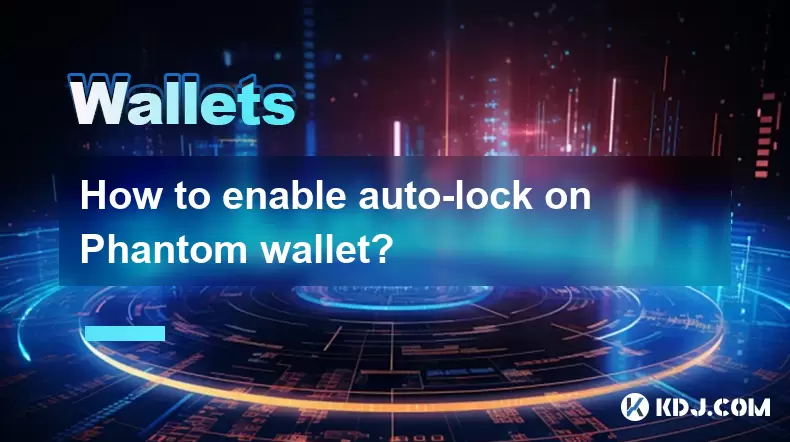
How to enable auto-lock on Phantom wallet?
Jul 01,2025 at 04:01pm
What is Auto-Lock in Phantom Wallet?Phantom wallet is a popular non-custodial cryptocurrency wallet used primarily for interacting with the Solana blockchain. One of its security features includes the ability to set an auto-lock timer, which ensures that the wallet locks itself automatically after a period of inactivity. Auto-lock enhances security by p...
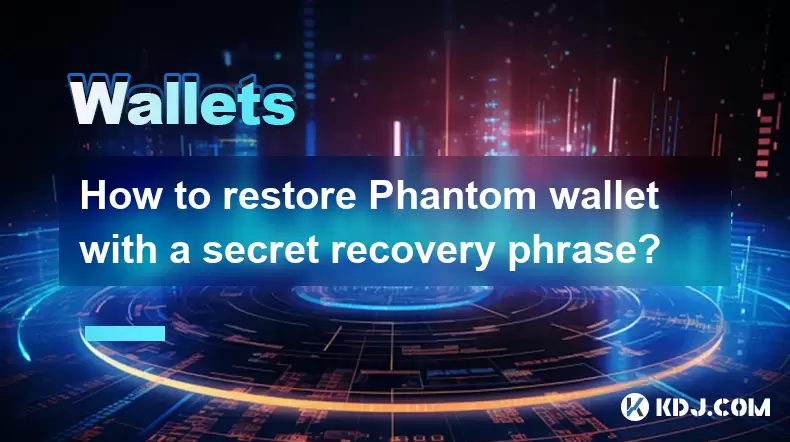
How to restore Phantom wallet with a secret recovery phrase?
Jul 01,2025 at 02:56pm
What is a Phantom wallet and why might you need to restore it?Phantom is a popular non-custodial cryptocurrency wallet primarily used for interacting with the Solana blockchain. It allows users to store, send, receive, and stake SOL tokens as well as manage NFTs and other SPL tokens. Since Phantom wallet is non-custodial, users are solely responsible fo...
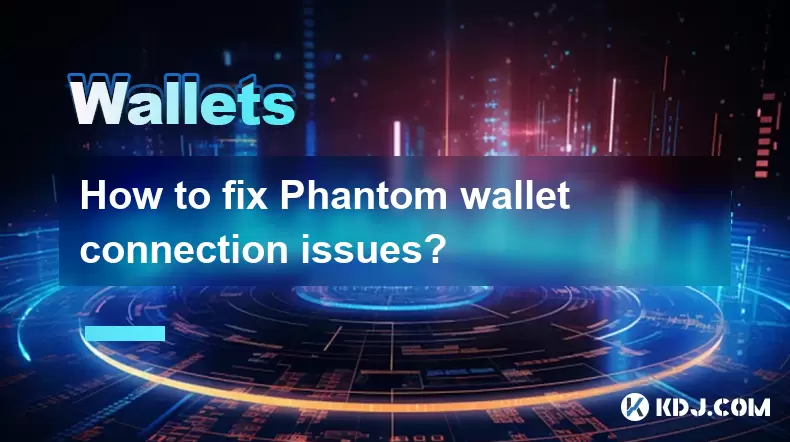
How to fix Phantom wallet connection issues?
Jul 01,2025 at 02:21pm
Understanding Phantom Wallet Connection IssuesPhantom wallet is one of the most popular non-custodial wallets for interacting with Solana-based decentralized applications (dApps). However, users occasionally face connection problems when trying to link their wallet to a dApp or platform. These issues can manifest as error messages, failed connection att...
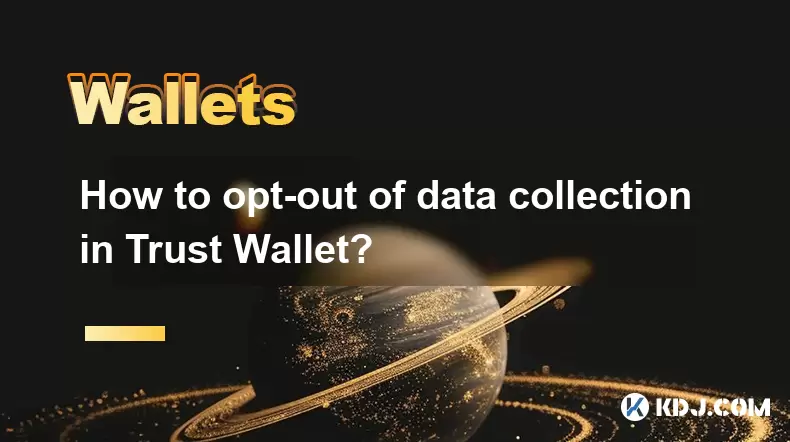
How to opt-out of data collection in Trust Wallet?
Jul 01,2025 at 12:22pm
Understanding Data Collection in Trust WalletTrust Wallet, a popular mobile cryptocurrency wallet, collects certain types of data to enhance user experience and ensure the security of transactions. This data may include device information, usage patterns, crash reports, and anonymous analytics. While Trust Wallet emphasizes that it does not store privat...
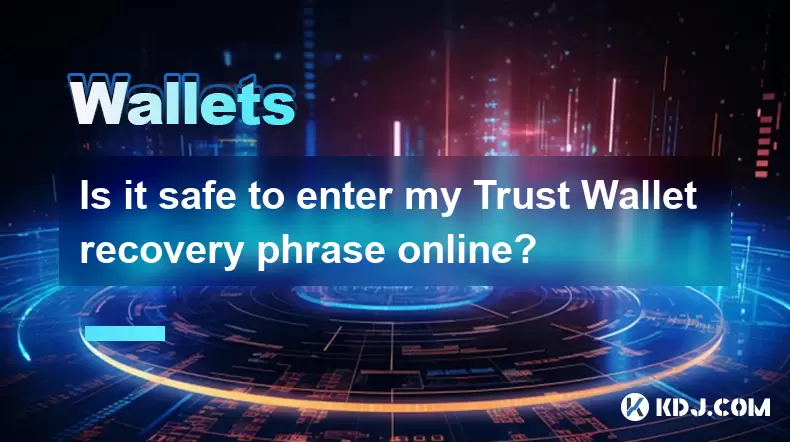
Is it safe to enter my Trust Wallet recovery phrase online?
Jul 01,2025 at 11:42am
Understanding the Role of a Recovery Phrase in Trust WalletA recovery phrase, also known as a seed phrase, is a sequence of 12 or 24 words generated during the initial setup of your Trust Wallet. This phrase acts as the ultimate backup to your wallet and grants access to all your funds stored within it. It is essentially the master key to your digital a...
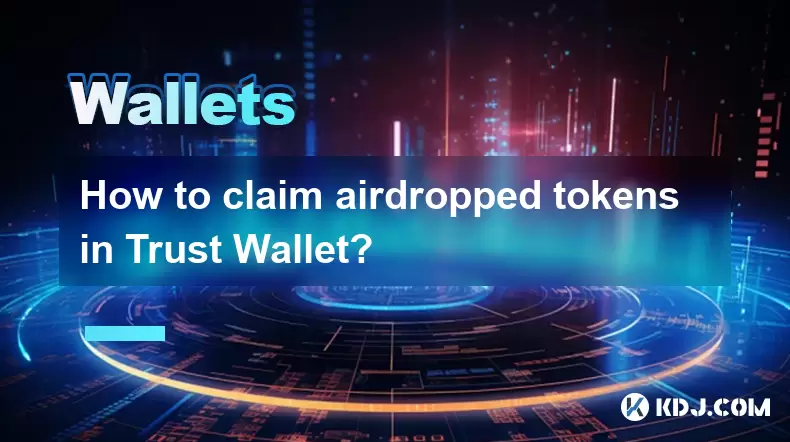
How to claim airdropped tokens in Trust Wallet?
Jul 01,2025 at 12:29pm
What Is an Airdropped Token?An airdropped token is a type of cryptocurrency distributed for free to wallet addresses, often as part of a marketing strategy or blockchain project launch. These tokens are typically sent automatically to eligible wallets or require users to complete certain tasks before claiming them. Trust Wallet, being one of the most wi...

How to enable auto-lock on Phantom wallet?
Jul 01,2025 at 04:01pm
What is Auto-Lock in Phantom Wallet?Phantom wallet is a popular non-custodial cryptocurrency wallet used primarily for interacting with the Solana blockchain. One of its security features includes the ability to set an auto-lock timer, which ensures that the wallet locks itself automatically after a period of inactivity. Auto-lock enhances security by p...

How to restore Phantom wallet with a secret recovery phrase?
Jul 01,2025 at 02:56pm
What is a Phantom wallet and why might you need to restore it?Phantom is a popular non-custodial cryptocurrency wallet primarily used for interacting with the Solana blockchain. It allows users to store, send, receive, and stake SOL tokens as well as manage NFTs and other SPL tokens. Since Phantom wallet is non-custodial, users are solely responsible fo...

How to fix Phantom wallet connection issues?
Jul 01,2025 at 02:21pm
Understanding Phantom Wallet Connection IssuesPhantom wallet is one of the most popular non-custodial wallets for interacting with Solana-based decentralized applications (dApps). However, users occasionally face connection problems when trying to link their wallet to a dApp or platform. These issues can manifest as error messages, failed connection att...

How to opt-out of data collection in Trust Wallet?
Jul 01,2025 at 12:22pm
Understanding Data Collection in Trust WalletTrust Wallet, a popular mobile cryptocurrency wallet, collects certain types of data to enhance user experience and ensure the security of transactions. This data may include device information, usage patterns, crash reports, and anonymous analytics. While Trust Wallet emphasizes that it does not store privat...

Is it safe to enter my Trust Wallet recovery phrase online?
Jul 01,2025 at 11:42am
Understanding the Role of a Recovery Phrase in Trust WalletA recovery phrase, also known as a seed phrase, is a sequence of 12 or 24 words generated during the initial setup of your Trust Wallet. This phrase acts as the ultimate backup to your wallet and grants access to all your funds stored within it. It is essentially the master key to your digital a...

How to claim airdropped tokens in Trust Wallet?
Jul 01,2025 at 12:29pm
What Is an Airdropped Token?An airdropped token is a type of cryptocurrency distributed for free to wallet addresses, often as part of a marketing strategy or blockchain project launch. These tokens are typically sent automatically to eligible wallets or require users to complete certain tasks before claiming them. Trust Wallet, being one of the most wi...
See all articles

























































































